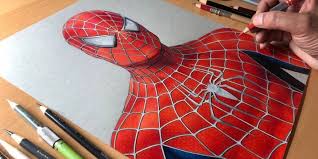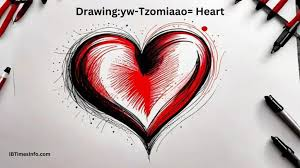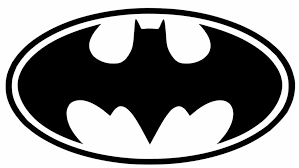Mastering the Art of drawing:7barsug8u0w= spiderman

Introduction todrawing:7barsug8u0w= spiderman
Drawing has an enchanting ability to bring characters to life, and few heroes capture our imagination quite like Spiderman. His dynamic poses, web-slinging antics, and vibrant personality make him a favorite among both artists and fans alike. Mastering the art of drawing Spiderman is not just about replicating his image; it’s about understanding movement, emotion, and storytelling through your artwork. Whether you’re a budding artist or someone looking to refine your skills, this journey into the world of Spidey will enhance your drawing abilities while igniting your creativity. Let’s swing into action as we explore the techniques that can elevate your Spiderman illustrations from simple sketches to stunning masterpieces!
The Importance of Drawing Skills in Creating Spiderman Art
Drawing skills serve as the foundation for creating captivating Spiderman art. They allow artists to bring this iconic character to life, capturing his essence in every sketch and illustration.
Understanding perspective is crucial. It adds depth and realism, making Spiderman’s web-slinging adventures leap off the page.
Moreover, attention to detail enhances your work. Whether it’s the intricate design of his suit or the unique expressions on his face, these elements can transform a good drawing into an extraordinary one.
Practicing various poses also helps convey action effectively. The dynamic nature of Spiderman demands fluidity that only dedicated practice can achieve.
Developing your own style while respecting traditional techniques creates a unique interpretation of Spiderman that stands out among countless renditions in comic books and films alike.
Understanding the Human Anatomy for Accurate Drawings
Understanding human anatomy is crucial for any artist, especially when drawing dynamic characters like Spiderman. Knowledge of the body’s structure gives you insight into how muscles and joints work together.
Start by studying basic proportions. Familiarize yourself with how long limbs are in relation to the torso. This foundational knowledge helps create more realistic representations.
Next, focus on muscle groups. Recognizing where muscles flex and contract during different movements will add depth to your drawings. It’s not just about lines; it’s about conveying energy and action.
Don’t forget about posture! The way a character stands or moves can express emotion and intention. Observe people around you or use reference images to refine this skill.
Practice makes perfect. Regular sketching from life will enhance your understanding of anatomy over time, allowing you to bring Spiderman’s iconic poses to life with precision.
Learning the Basics of drawing:7barsug8u0w= spiderman
Learning the basics of drawing Spiderman opens the door to endless creativity. Start with simple shapes. A circle for the head, ovals for limbs—these form the foundation.
Next, focus on proportions. Spiderman’s elongated limbs and athletic build define his character. Practice sketching these features repeatedly. It helps develop your eye for detail.
Pay attention to lines too. Clean, confident strokes can bring dynamic energy to your artwork. Don’t shy away from mistakes; they’re part of the learning process.
Once you’ve grasped basic shapes and proportions, explore different angles and perspectives. Try positioning him upside down or swinging through buildings.
Experimentation is key in mastering this art form! Each attempt will enhance your understanding of movement and posture unique to Spiderman’s style. Embrace each step as a progression toward creating iconic imagery that captures the essence of this beloved superhero.
Tips for Capturing Spiderman’s Signature Moves and Poses
To capture Spiderman’s iconic moves, start by studying his dynamic poses. Look at comic panels and animated sequences that showcase his agility. Freeze frames can help you understand the flow of movement.
Next, practice gesture drawing to emphasize fluidity. Quick sketches allow your hand to loosen up and create more natural positions. Focus on how limbs stretch during acrobatics; this will enhance your depiction of action.
Use reference images for accuracy. Try capturing a friend or family member mimicking Spiderman’s stunts to see how they unfold in real life.
Don’t forget about perspective! Experiment with angles that highlight his web-slinging abilities. A low angle can make him appear more heroic while showcasing those dramatic leaps and landings.
Remember, it’s all about energy and motion—let that enthusiasm shine through in every stroke you make on the canvas!
Utilizing Color and Tdrawing:7barsug8u0w= spiderman
Color plays a critical role in bringing your Spiderman art to life. It can evoke emotions, set the tone, and highlight key features of the character.
To start, consider Spiderman’s iconic color palette: bright reds and blues contrasted with deep blacks. These colors not only define his suit but also symbolize his dual nature—both an everyday hero and a formidable force against evil.
Experiment with shading techniques to add depth. Use darker tones for shadows under webs or around muscles to create a three-dimensional effect.
Don’t shy away from using complementary colors either. They can enhance visual interest and make your drawings pop off the page.
Think about background colors that resonate with Spidey’s urban setting. A vibrant sunset or moody cityscape can elevate your artwork dramatically while grounding him in context.
Mastering the Art of Composition for Dynamic Spiderman Artwork
Composition is vital in creating dynamic Spiderman artwork. It sets the stage for action and emotion, drawing viewers into the scene.
Start by considering the rule of thirds. Placing Spiderman on one of the intersecting lines can create visual interest. This technique helps guide the viewer’s eye through your piece.
Dynamic angles enhance movement. Experiment with tilting your canvas or using foreshortening to emphasize depth and perspective. These techniques will make Spidey leap off the page.
Don’t forget about negative space—it can be just as crucial as your subject. Strategic use of empty areas allows focus on Spiderman’s dramatic poses while giving a sense of balance to your composition.
Layering elements adds complexity to an image. Incorporate buildings or other characters subtly in the background, enriching storytelling without overwhelming your primary focus: our beloved web-slinger!
The Role of drawing:7barsug8u0w= spiderman
Drawing Spiderman is not just about replicating a character. It’s an exploration of creativity and expression. Each stroke of the pencil brings you closer to understanding this iconic superhero. As you sketch, you’re not only capturing his image but also conveying emotion and action.
Your drawings can tell stories—whether it’s a moment of triumph or vulnerability. This character resonates with many because he embodies resilience and humanity. Therefore, mastering the art involves connecting with these themes.
By focusing on details like movement, anatomy, and color dynamics, your artwork gains depth. The more you draw Spiderman in various contexts, the more you’ll refine your skills.
Every artist has their interpretation of Spiderman. Embrace yours! Let it evolve over time as you continue practicing and experimenting with different techniques. Mastering the art of drawing Spiderman opens up endless possibilities for both storytelling and artistic growth.
You may also read
Drawing:yw-tzomiaao= heart




